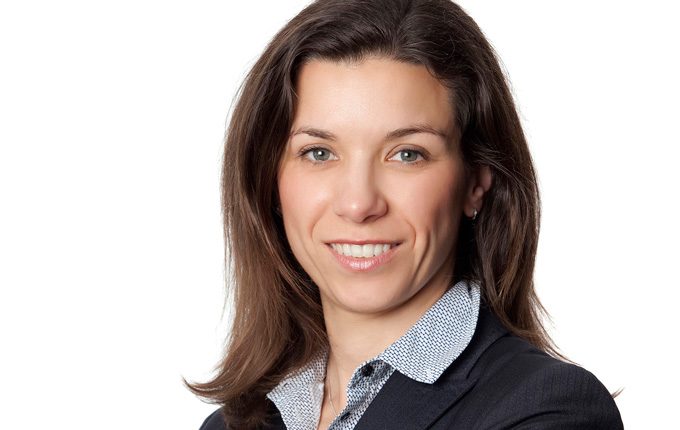When [i3] Insights spoke to Marcel Jeucken, Managing Director Responsible Investment at Dutch pension fund PGGM, in April this year about impact investing and probed into the optimisation of the investment process, Jeucken exclaimed that the question implied a vast array of investments to choose from.
The market for impact investments was deep enough to play in, he said, but not so deep that they could be overly selective of the investments they made.
And there we have one of the prime obstacles for institutional investors to participate in impact investing: scalability.
Finding companies that provide a good investment cases and also generate beneficial social or environmental outcomes are few and far between. Allocating a hundred million dollars, let alone a few billion dollars, to this approach can be tricky.
But one way to overcome this issue is by tilting, Joanna Nash, a member of the Global Equity Research team within the Scientific Active Equity business of BlackRock’s Active Equity Group says.
“Some people prefer a more targeted approach and then you go into the private equity or venture capital space. We are well-aware that we are not doing that,” she says in an interview with [i3] Insights.
“But our view is that if we can provide index-like returns but tilt portfolios to social outcomes, then why not do that instead of having a [regular] index exposure?”
Instead of applying a negative or positive screen, this approach prefers to over- and underweight stocks based on environmental, social and corporate governance (ESG) metrics and it uses a quantitative process to implement it, which then also allows the team to report on the progress of the underlying companies in these areas.
“We look at firms that think about the way they produce products and then we have a portfolio where we tilt towards health, environmental and corporate citizenship. How we find those companies that do well on this spectrum is through a very quantitative, systematic process,” Nash says.
“You can look at direct measures. For example, you can look at whether a company has an independent chairman, how many independent directors is has and how many women in senior management.
“We look at the different policies that companies have in place and then we try to qualify some of those quantitative measures.”
But looking at policies isn’t enough, Nash said. You can get false signals by focussing only on quantity.

We realised that we couldn’t just screen out the bad guys and put all these companies with policies in
“Initially, we looked at a whole range of policies: does this company have an environmental policy, does it have maternity leave policies? We looked at all these sorts of yes-no type answers, because hopefully, if they have an environmental policy, they don’t have any environmental controversies.
“Surprisingly, what we found is that when companies started ticking all 18 policies that we looked at, the likelihood that they would have a controversy the following year was very, very high.
“We realised that we couldn’t just screen out the bad guys and put all these companies with policies in,” she said.
Social media has also thrown up a wealth of data, which can help home in on companies with good cultures. There are companies that collect this type of information, including recruitment company Glassdoor, and make it accessible to those who want to use it.
“We use social media measures to get an idea of employer happiness: how do they view the Chief Executive Officer (CEO) and how do they view employee prospects? You can get a bit of an insiders’ view by looking at some of these social media aspects,” Nash says.
“We looked at this data and the data was reasonable; it had a nice bell-shape curve to it. It looked like what you would expect; it didn’t have a lot of extremes.
“The only place where you saw a lot of extremes is where they asked: ‘Do you like the CEO?’ There were a lot of extremes where either people liked them or didn’t liked them at all. You didn’t get that bell-shaped curve.”
But apart from current developments, Joanna and her team also try to distil what is likely to happen a few years out. One way to do this systematically is by looking at the type of patents companies file.
“We get data from patent offices that are tagged by the intellectual property organisation as ‘environmentally sound technologies’, things like alternative fuel sources, carbon capture, batteries, all those sorts of [technologies] that are looking to adapt to climate change,” Nash says.
“Then we can tag those patents to companies and tilt our portfolio to get more of an exposure to these green patents and you get a view on how companies are adapting to the 2-degree world,” she says.
The same approach can be used for the health sector, where some research might result in a greater social benefit than others.
“In health, what we do is get a whole lot of data from clinical trial databases and look at which company is doing clinical trials on the highest impact diseases?
“Someone doing research into Alzheimer’s or cancer gets a higher ranking than someone doing research into baldness. Then we tilt our portfolios to the companies that do that type of work,” she says.
__________
[i3] Insights is the official educational bulletin of the Investment Innovation Institute [i3]. It covers major trends and innovations in institutional investing, providing independent and thought-provoking content about pension funds, insurance companies and sovereign wealth funds across the globe.

